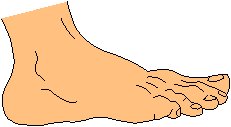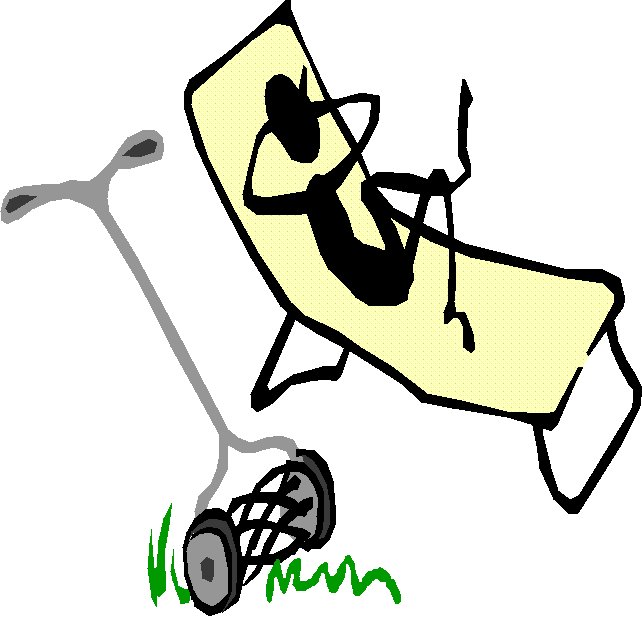If you feel that stress is affecting your studies,
A first option is to seek help through your educational counseling center.
Stress Management is the ability to maintain control when situations, people, and events make excessive demands.
∑
What you can do to manage your stress?
∑
What are some strategies?
1. Look around and see if there really is something you can change or control in the situation

2. Don't overwhelm yourself by worrying about your entire workload. Handle each task as it comes, or selectively deal with matters in some priority
3. Try to be positive
and give yourself messages as to how well you can cope rather than how horrible everything is going to be. “Stress can actually help memory, provided it is short-term and not too severe.
Stress causes more glucose to be delivered to the brain, which makes more energy available to neurons. This, in turn, enhances memory formation and retrieval. On the other hand, if stress is prolonged, it can impede the glucose delivery and disrupt memory
4. Try to "use" stress
and if you can't fight what's bothering you and you can't flee from it, then just flow with it or try to use it in a productive way
5. Selectively change the way you react, but not too much at one time. Focus on one troublesome thing and manage your reactions to it/him/her
6. Reduce the number of events going on in your life and you may reduce the circuit overload
7. Change the way you see things
and learn to recognize stress for what it is. Increase your body’s feedback and make stress self-regulating
8. The bottom line of stress management is "I upset myself" so
develop a thick skin
9. Avoid extreme reactions
; why hate when a little dislike will do? Why generate anxiety when you can be nervous? Why rage when anger will do the job? Why be depressed when you can just be sad?
Back to top
10. Set realistic goals for yourself
11. Don't sweat the small stuff
;
Try to prioritize a few truly important things and let the rest slide
11. Work off stress

With physical activity, whether it's jogging, tennis, gardening
12. Get enough sleep;
Lack of rest just aggravates stress
13. Do something for others
To help get your mind off your self
14. Remove yourself from the stressful situation
If only for a few moments daily. Give yourself a break
15. Avoid self-medication or escape;
Alcohol and drugs can mask stress. They don't help deal with the problems
16. Learn how to best relax yourself
17. Most importantly,
if stress is putting you in an unmanageable state or interfering with your schoolwork, social and/or work life, seek professional help at your school counseling center
QUICK RELAXATION TIPS
Deep Breathing:
Take a deep breath. Hold it for about three seconds, then let it out all at once (with a sigh if it feels better!). As you let it out, let your jaw relax, your shoulders relax and think "calm." Let your teeth remain slightly apart (we should go through the day with enough space between our teeth for a small pencil).
Tense-Release: Tense yourself all over, one part at a time. Pull your toes up as if to touch your shins and hold it. Tense your thighs... your buttocks... tense your fists and your arms... take a deep breath and hold it. Clench your jaws and close your eyelids tight. Hold yourself tense all over for four or five seconds. Then let go all at once. Feel the tension leave your body.
Cool Air In, Warm Air Out: With your eyes closed, shift your attention to the tip of your nose. As you breathe in, become aware of the air coming in your nostrils. As you breathe out, be aware of the sensations of the air passing back out. Perhaps you notice that the air coming in tends to be cooler and the air you breathe out tends to be warmer. Just be aware of cool air coming in and warm air going out.

Heavy Feet:
Just imagine that your feet and legs are getting heavier and heavier with each breath out. It's almost as if you are wearing lead boots. Your feet are getting heavy. Your legs are getting
heavy. Imagine this for a few seconds.
Warm Hands: Visualize your hands as warm, relaxed and warm. You might imagine them in a bucket of warm water, near a fire, or in warm, woolly gloves. Perhaps you can even begin to feel the blood flowing down your arms into your hands. Your hands are warm... relaxed and warm.
Breathing Tensions Away: Gently focus your attention on your feet. As you take in a slow, deep breath, imagine collecting all of your tension in your feet and legs, breathing them into your lungs and expelling them as you exhale. Then, with the second deep breath, inhale all the tension in your trunk, hands and arms and expel that also. With a third deep breath, collect and expel all that tension in your neck and head. With practice, you may be able to collect the tension from your entire body with one deep inhalation.
Equalized Breathing: Take four seconds to breathe in and four more seconds to breathe out. That is, as you inhale count to yourself, "1 one thousand, 2 one thousand, 3 one thousand, 4 one-thousand." As you breathe out, count the same way. Repeat this exercise 4 or 5 times.
Abdominal (Diaphragmatic) Breathing: Place one hand on your chest and the other hand on your navel. Breathe so that only the hand on your navel moves--as you inhale, your hand moves in; as you exhale, your hand moves out. The upper hand does not move. Watch your hands as you breathe and see if you can breathe with only the lower hand moving.
Ideal Relaxation: With your eyes closed, take a moment to create, in your mind's eye, an ideal spot for relaxation. You can make it any place you want it to be--real or imagined. Perhaps it is a favorite room, a beautiful meadow, a beach on an ocean, or a floating cloud. See yourself in comfortable clothes. Now, once you have created this special place, go back there for 15 seconds or so whenever you feel the need to relax.

4 S's -- The Ultimate Mini-Quickie:
First, smile and make your eyes sparkle. (Yes, you can do this!!!) Then take a deep breath. As you let it out, let your jaw hang slack, shoulders sag and forehead smooth out. Go ahead, do it again; smile and make your eyes sparkle, breathe deep, let it out, and feel your jaw go slack, your shoulders sag, and your forehead smooth out. Remember the 4 S's: smile, slack, sag, smooth...
There's a reason for each of those parts.
∑
As we get tense, our facial muscles tend to get tense and "hard-looking." Smiling breaks that up because it's difficult to remain as stressed after smiling.
∑
Deep breathing counteracts tension-filled shallow breathing. We tend to tense our jaws when stressed, so letting it hang slack lets go of some of that stress.
∑
The same with our shoulders--they tense with stress, so letting them sag and relaxing releases the built up tensions.
∑
Letting our forehead smooth out releases the tension that tends to gather there when we frown or wrinkle our forehead.
Sources:
www.public.iastate.edu
www.iss.stthomas.edu
Back to top




